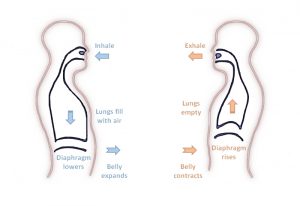Top 5 vocal exercises for vocal professionals
Top 5 vocal exercises for vocal professionals
vocal exercises for vocal professionals. Singers, actors, radio jockeys, dubbing artists-what is the common factor between all of these professions? They all have one crucial factor that can make or break their career-voice.
Among these and many other professions, a person’s speaking or performing voice is a crucial asset that can too often be taken for granted. One day with a sore throat, however, will serve to establish the voice truly is.
What can people in voice-heavy professions do to keep it in working order? The answer is, of course, exercise. Like most other body processes, voice production (also known as phonation) is carried out by muscles inside and near the voice box (or larynx). Doing an appropriate warm-up exercise before periods of strenuous voice use as well as cooling down afterward can help maintain the health of your voice.
Read on to learn about the top five vocal exercises as recommended by voice health specialists.
-
Breathing exercises
- If your voice is an engine, then the petrol is the air exhaled by your lungs.
- Make sure these are in optimal condition by doing abdominal breathing (read more about it here).
- Then practice increasing the capacity of your lungs (i.e. your ‘mileage’) by taking a deep breath from your diaphragm and then exhaling on a continuous consonant sound like /sh/ or /f/.
- You can make sure your technique is proper by placing your hands on your abdomen and your ribcage. You should aim for an expansion in your abdomen with inhalation and a shrinking in exhalation. There should be less movement in your chest and no movement in your shoulders during breathing.
-
Humming-
- Gentle humming at different pitches on the sound /m/ can help activate the nasal and spinal resonators during voice production.
- These play an important role in projecting your voice, i.e. your voice ‘carrying’ across the room without you having to strain your throat.
- While humming, pay attention to the ‘placement’ of your voice. You should feel a significant tingling or vibration in the ‘mask’ region of your face, anywhere between the bridge of your nose to the edge of your jaw.
- The placement will change for different vocal dynamics, but should always be maintained as forward as possible.
- Certain pranayama exercises like Bhramari can also accomplish this objective.
-
Lip and Tongue Trills
- Have you ever pretended to drive a car as a child? You may have made a vibrating sound with your tongue and/or lips by flapping them with air.
- This sound is called a trill. It is a valuable tool to help reduce the strain on the vocal folds and ensure the correct air pressure is being used in phonation.
- The key to producing a smooth and sustained trill lies in relaxing the surrounding muscles-the airflow has to ‘drive’ the vibration.
vocal exercises for vocal professionals
-
- Practicing a trill without and with simultaneous voicing can serve as an instant rejuvenation for your vocal system.
- In case you are unable to sustain a trill at all, producing voice through a straw with a similar emphasis on vibration at the front of the face while doing so can also be done.
-
Siren sound
- Gliding across different pitches smoothly like a siren is useful in stretching the muscles used in changing pitch.
- You can practice this on different closed vowels like /u/ (like in ‘shoe’) and /I/ (like in ‘teeth’).
-
Yawn-sigh
- In case you are feeling any tightness in the vocal system or you want to cool down after a period of voice use, a yawn-sigh will help. This exercise is beneficial in relaxing and enlarging the space at the back of the throat. Your vocal muscles can then come away from an overextended state.
- Start by initiating a yawn, feeling for the opening at the back of your throat. Then move to a soft sigh, maintaining forward resonance as you do so.
You can practice these exercises regularly and also follow other practices for vocal health (as outlined here). In case you have any concerns about your voice or are experiencing any of the red flag symptoms as given here, you can consult with our therapists at 1specialplace.
Please comment below if you found this article useful!
If you wish to know more about Speech-Language Therapy, kindly contact us at info@1specialplace.com
https://therakonnect.com/appoin
- Reading for Fun, Reading for Language, Reading for Life! - May 5, 2021
- What to do When Your Child gets an Autism Diagnosis - April 18, 2021
- Top 5 vocal exercises for vocal professionals - March 16, 2021




Leave a Comment
(0 Comments)